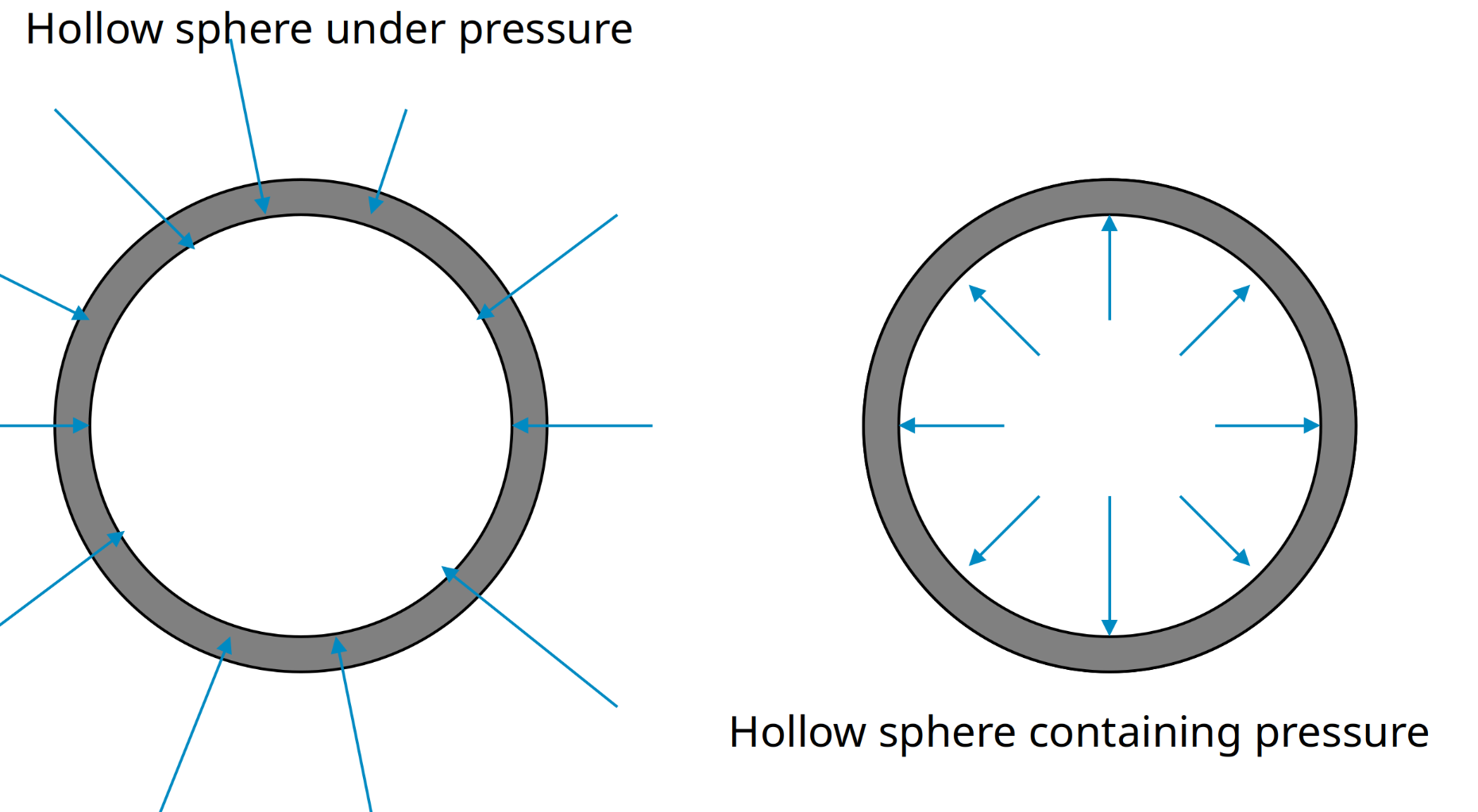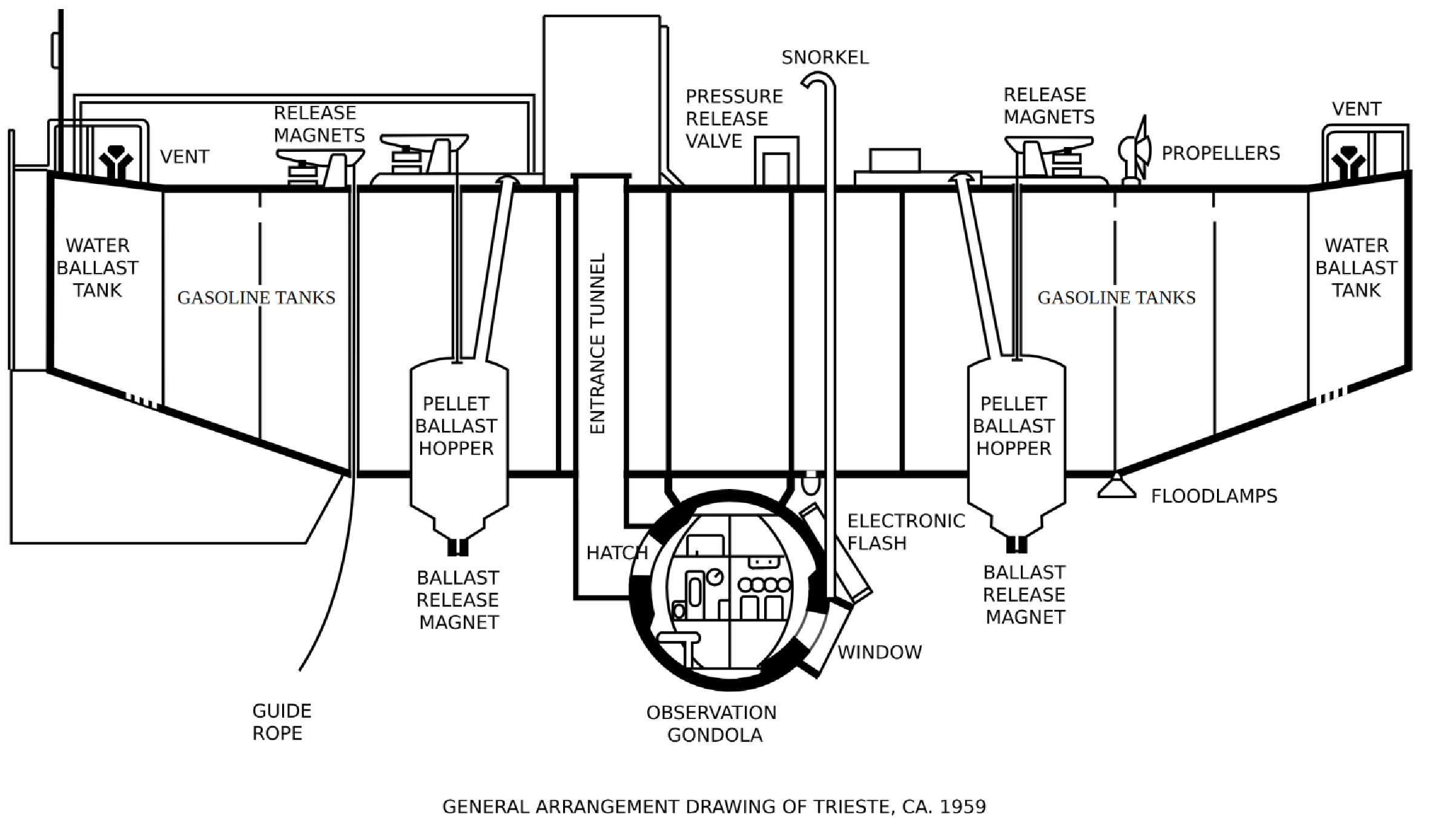Most if not all deep submergence vehicles that take people to the deepest parts of the ocean have a spherical pressure hull, not a cylinder. There is a simple reason for this: symmetry. The spherical symmetry of these crafts ensures that the pressure and forces will distribute in a way that causes, as much as possible, the cancellation of the forces acting on the hull. Ocean Gate’s Titan being a cylinder with two hemispherical end caps, one under the pointed fairing, violated this principle to an extent. The curved cylinder does have this same effect going on… but not to the same extent as a spherical shape. Carbon fiber vehicles have been made as pressure vessels for holding in 1 atmosphere of pressure against very low outside pressures. For example, many private and commercial airliners and even spacecraft (notably those made by Scaled Composites) have carbon fiber construction. Titan did show that at least to a certain extent they can resist high pressure on the outside as well. It did dive deep several times before. However, there is a key difference between a high-pressure difference applied from the outside in and a high-pressure difference from the inside out.
Spherical shapes and Forces

Consider a spherical ball made of some rigid material. If it is under pressure from all sides, the pressure will be transmitted into the sphere. The stresses and strains inside the sphere will be applied in every direction. At every point, there will be a tendency for these forces to cancel each other out. The sphere will be like an infinite set of arches all acting in every direction to cancel the forces applied to it, as long as it can maintain its spherical shape and rigidity.
A similar spherical ball filled with high-pressure gas or liquid will tend to become a bit stiffer and maintain its shape better provided the side does not breach. When it does, it will pop like a balloon.
A carbon fiber tube has some of these properties but not all of them. This is why Titan was able to dive on Titanic without this sort of incident before. The idea being that the carbon fiber cylinder maintains its integrity and the titanium hemispherical endcaps get pressed in by the water pressure. The problem likely is that any TINY flaw in the carbon fiber construction will lead to a failure eventually. Metal when it fails will bend first, will creak. Carbon Fiber will bend a bit. Look at the wings on a 787. However, when it is going to fail, it fails by shattering.

Note in this design the manned pressure vessel is a metal sphere. Most vehicles like this have adhered to this principle. The sphere tends to be small because the larger one makes the sphere the more surface area it has. The more surface area it has the more pressure it has to resist.
These are very different than the typical military submarine. Such submarines only dive at most 300 meters, and are built for speed, stealth, and the ability to act against targets on the surface or on land. Hence their different shape.
Thoughts and prayers for those lost in this tragic incident.
Stockton Rush, Ocean Gate CEO: He tried something different, it worked several times. Basic physics and the current state of matterial science eventually won. We learn by trying.
Hamish Harding, adventurer and pilot: he went to the edge of space and the challenger deep. This was probably not seen as a big deal until the end.
Paul-Henri Nargeolet, a legendary submersible operator who reputedly dove on Titanic 30+ times. Another day at the office. He went doing something he clearly loved.
Shazada Dawood, Billionaire and adventure seeker and his son Suleman Dawood. This father and son were likely having the time of their lives until the very end. The loss of the 19 year old Suleman is the most tragic part of this.
Between dying by implosion and dying trapped in total darkness and cold at the bottom of the ocean, implosion is the better situation. There is some reporting that they had sensors that could tell if the hull was compromised and may have tried to make for the surface before final implosion. Hopefully, they had just a minute of minor concern then it was over. Considering the "hopeful" scenario had them in the cold, near absolute dark, of the deep ocean ... at best with some bio luminescent fish out the window... this was the best outcome one could realistically expect.
Hopefully in the future any such vehicle will have to be tested and will adhere to the basic principle that a spherical shape, made of a rigid, homogeneous material will be able to bring people to view the Titanic again.





Comments